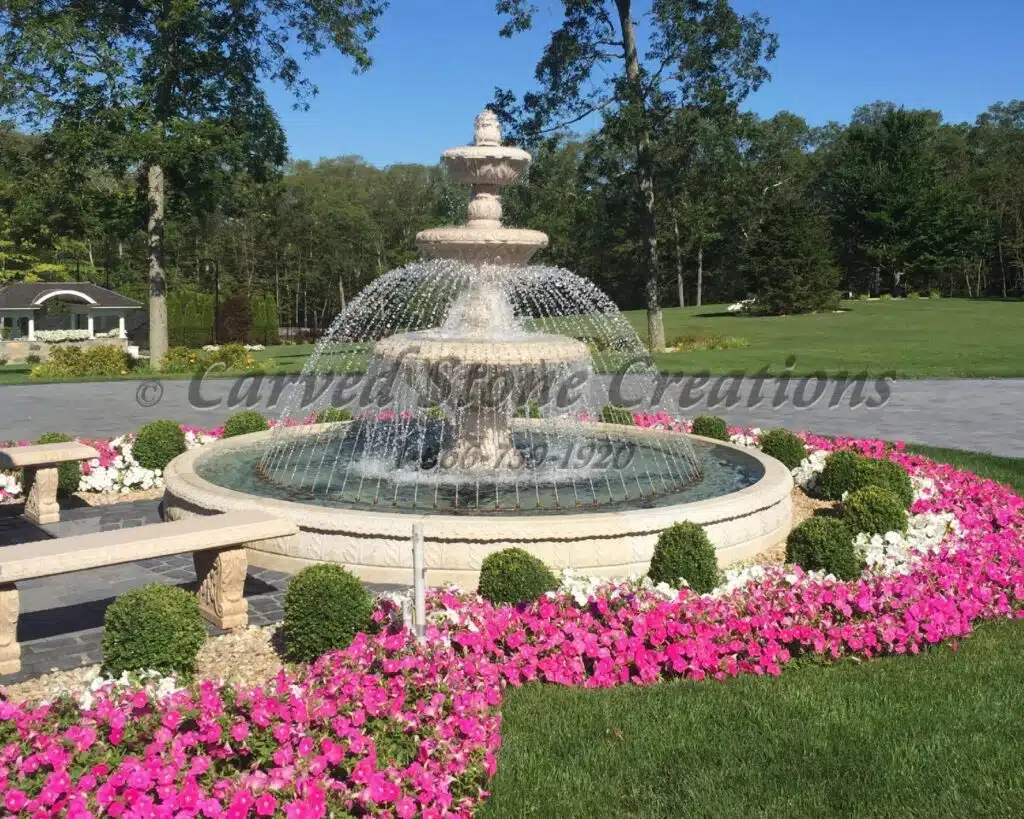Top 7 Things to Consider When Adding a Stone Fountain to Your Yard
November 30, 2018
Are you looking to add a fountain to your yard?
Or, are you hoping to give your yard a soothing appeal or to revitalize the view? Or, are you aiming to increase your home’s sale value or if you’re doing it for the sake of keeping up with today’s garden trends? No matter your reason adding a stone fountain is a significant investment.
And as such, the investment needs to be given a lot of thought.
Poor planning may lead to your fountains depreciating sooner than you would expect. To prevent that from happening, here are seven things you should consider before you add a fountain to your property.
1. Total Cost of the Project
People that are thinking about adding decorative water fountains often are surprised by sometimes little known things which are needed to ensure you end up with a fountain that is not only within your budget, but also will last a very long time with little maintenance. (Very often, spending a little more on the front end will result in thousands of dollars of savings later on – especially if you want a fountain that will last generations, rather than only a few years.)
A fountain’s size and its overall aesthetic will depend on how much you can spend on it. So, if you’re a bit tight on the budget, please contact us, as there are many times “alternate” ways of installing the fountain to allow you to get into a fountain more economically than you ever thought!
You should also consider at least buying the parts you need from a contractor that installs fountains all the time, as they will have many years of experience in things that work, and conversely do not work well too. So, if you are a do-it-yourselfer, partnering with a professional willing to talk you through the various pitfalls will be a huge benefit. (Rather than doing google searches to learn how to install a fountain yourself, or “winging it”.)
Professional contractors know more about sturdy foundations and how to level the ground for such a project. So, unless you have sufficient knowledge about working the land, it’s best to hire professionals for the job, as unless you are installing a very small fountain – setting the very heavy parts just the one time is a lot safer, and will cause less potential problems/breakage.
Remember that there are more things you need to pay for besides the fountain and workers. Some items may go over your head when you’re budgeting your costs for a fountain: things like the water that will fill it monthly, the mechanics that will make your fountain spout water, the chemicals that keep the water clean, and other aesthetics like rocks, plants, and statuettes.
Keep these things in mind if you want to avoid going over your proposed budget.
2. Location of Your Fountain
One of the reasons you’re building a backyard fountain is to have something pleasant to view. Or, maybe you are trying to drown out nearby noises, but regardless of the reason, you’ll want to place your fountain somewhere people can see it.
Make sure you can see your fountain from a place in the house where you go to relax someplace like the den or the living room. If you want other people to see it, places like a courtyard are ideal.
Sometimes, there will be no way for you to see your fountain from your desired room. In these cases, you can replace walls with glass alternatives.
Front yard fountains are also a possibility. These types of fountains allow you to enhance your home and its facade.
Consider placing them in areas that people will see the moment they enter your home, like in front of the main door. It will leave your friends and guests in awe as soon as they step in your house.

3. The Space for Your Fountain
Your fountain will need a lot of space in your backyard. Outdoor water fountains tend to splash beyond the size of the fountain itself, particularly if you are in a windy location. So, don’t put a fountain too close to your house if the prevailing winds tend to blow towards your house, or the exterior walls of your house will be continually wet from blowing water from the fountain.
You should consider if the spot you’ll place it in can get water on demand, as many times customers say they don’t want to spend the money on trenching water to their fountain site, and adding an auto-fill… But, you have to consider “time” as well. As right now you may be willing to drag a hose over to the fountain every week, but as you grow older, it may become more of a hardship. Also, if you forget and leave the fountain on when you go on vacation (with no autofill), it’s possible for the fountain to run out of water while you are gone, and therefore likely burn up an expensive pump.
If you plan on pumping water to your fountain, it should not be far from the main water line of your neighborhood.
Also, the elevation of your fountain should not be lower than ground level. A fountain placed lower will flood if it rains too much in your area. Place it somewhere level to your house or higher instead.
You should also consider an area with little trees and shrubbery. Placing your fountain in a clear area will reduce the number of leaves and other debris from falling onto the water.
4. Your Climate
Many people overlook the temperatures where they live. For example, people who live close to the equator don’t take into account the heat. Heat often results to animals populating the fountain. These animals can pollute your fountains water. Common criminals of this case are birds.
Areas with a cold winter may cause the water to freeze. As you may know, freezing water expands, which often destroys fountains. So, depending on where you live, that has a lot to do with what kind of substrate should be used to make a fountain successful for your area. As there is nothing worse than spending thousands of dollars on a fountain, only to discover you need to cover it with a huge/ugly tarp for 6 months of the year – if your climate has freeze/thaw seasons.
If that is the climate you live in, and you want to enjoy the form/shape of your fountain even in winter when the bowls are filling with snow, the ONLY option you have is either Bronze or Granite. (Other softer more porous things like marble, travertine, limestone, cantera, onyx, or concrete will take on moisture in fall, and when it freezes – will start to crack / fall apart very quickly…)
5. Methods of Powering Your Fountain
A fountain with no running water may as well be a glorified pond. Powering your fountain with electricity needs a few considerations before you build it. You need to make sure the spot you want to install it has easy and safe access to power.
You should add an electrical outlet dedicated to the fountain alone. Using other electronics in the same outlets as the fountain can overload it.
The outlet should also have a cover to prevent water from reaching it. Do this unless you plan an underground way of powering it with electricity. Doing so will help prevent your home from catching fires caused by voltage or from power outages.
An alternative way you can power fountains to have running water is through solar means. There are new ways available to use solar panels in powering fountains. They are a much cheaper and greener alternative as well.
6. Your Fountain’s Style
Some people don’t think about how their fountain will look, they only think about getting one. These people find trouble deciding when the thought of the contractors waiting for their decision pressures them. So, plan your fountain’s style ahead of time.
Traditional fountains have many statuettes as well as many other decorations engraved along their sides. These fountains give your yard an old, powerful look.
If you’re young, like 22.39% of gardeners, you may want a more modern look. You may prefer fountains made from fiberglass. These have a more futuristic appearance, but tend to not last very long. (As the fiberglass tends to get brittle over time with UV Exposure, and it’s quite lightweight, so therefore can be blown over and crack that way.)
7. Future Maintenance
Many fountains crumble or stop working after two years or so. Sometimes it’s because there hasn’t been enough maintenance done, and the pump stops working. Other times, it’s caused by owners not knowing specifically HOW to maintain their particular fountain.
For example, many times clients insist on buying a marble or limestone fountain, as they like the look of that particular stone. Or, they purchase a Cantera fountain (which is a cheap, easy to carve stone from Mexico), as it’s more economical than other fountains they were seeing online.
Honestly with softer more porous stones like that, just the chemicals you put into the water to keep the algae knocked down will slowly eat the stone itself at the same time. And also, when it comes time to clean those kinds of fountains, many cleaning products will do the same thing. So therefore maintenance becomes a very manual “elbow grease” situation, if you don’t want the cleaning products to hurt your fountain.
That is why, in 99% of the cases, we recommend granite fountains, as there really is not much you can do to hurt them, maintenance/cleaning is a breeze, and they will last 100’s of years if you don’t let water freeze in them. (In the other 1% of the cases (where the customer has an onsite groundskeeper that takes meticulous care of the fountain) – then installing a marble fountain is much more feasible.
Before you have a fountain installed, remember you’re responsible for maintaining it. Proper maintenance ensures your fountain stays in working condition. You can consider hiring a professional gardener instead. They make sure nothing clogs your fountain’s pumps as well as clean them.
Plan for Your Stone Fountain Now
So, before you install a stone fountain, take into account these seven essential things.
But it shouldn’t end here. There are more tips and tricks to master. Feel free to visit us today and read some of our other guides.
Or, if you have any questions about stone decor fountains – don’t hesitate to contact us here.
